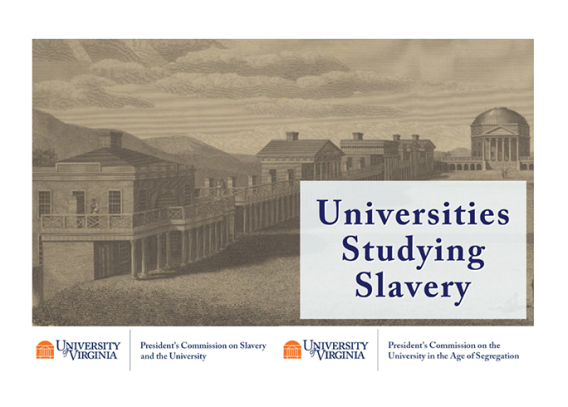About
Many universities are examining their histories and discovering their connections to slave labor and Indigenous dispossession. This symposium highlighted the ongoing efforts and research in the areas of slavery, dispossession, and restorative justice, with a focus on the legacy of racism and its enduring effects at Emory University. The sessions included creative interpretations and dialogue, with a primary focus on the perspectives of Black, Native American, and Indigenous peoples.
- See the online program schedule for a complete list of sessions and our complementary programming for related and ongoing exhibitions.
- Watch a brief overview of the symposium, and visit the session playlist on YouTube.
- Did you attend? We would love to know about your experience via this short survey.
Related Links

Emory is a member of Universities Studying Slavery
VISITOR INFORMATION
Dive Deeper
-
Sponsors
-
Acknowledgement
We acknowledge that Emory University was founded in 1836 on the historic lands of the Muscogee (Creek) Nation, 15 years after the First Treaty of Indian Springs (1821) dispossessed the Muscogee of land including both Emory campus locations. We also acknowledge that Emory University's founders were slaveholders, and the Oxford campus was originally constructed by enslaved people. To these peoples and their descendants, we acknowledge the grave injustices inflicted on them, and we recognize the indelible mark of their labor on the creation of the university.
-
Collage Images
Black-and-white photos of Black student activists at Emory University (Emory University Archives)
Rare first edition of David Walker's 19th century anti-slavery book, "Appeal" owned and signed by W.E.B. Du Bois, acquired by Emory University's Stuart A. Rose Manuscript, Archives and Rare Book Library
Photograph of Muscogee Creek Nation leader Chitto Harjo (Chief Crazy Snake), a vocal opponent of government efforts to divide communal land into individually owned allotments (Library of Congress)
Atlanta Journal newspaper article on Kitty's Cottage in Oxford, GA, home to a woman who was enslaved by one of Emory University's trustees
15th-century AD Mississippian shell gorget (pendant), with spirals and land representation (Michael C. Carlos Museum)
Portrait of Frederick Douglass featured in an original copy of one of the abolitionist’s autobiographies, “My Bondage and My Freedom,” published in 1855 (Rose Library)
1850 edition of The Narrative of Sojourner Truth acquired by the Stuart A. Rose Manuscript, Archives and Rare Book Library (article on p. 31)
1925 aerial view of original buildings on Emory University's Oxford campus, which were constructed with slave labor (Emory University Archives)
Emory is an EEO Employer-Disability/Veteran
